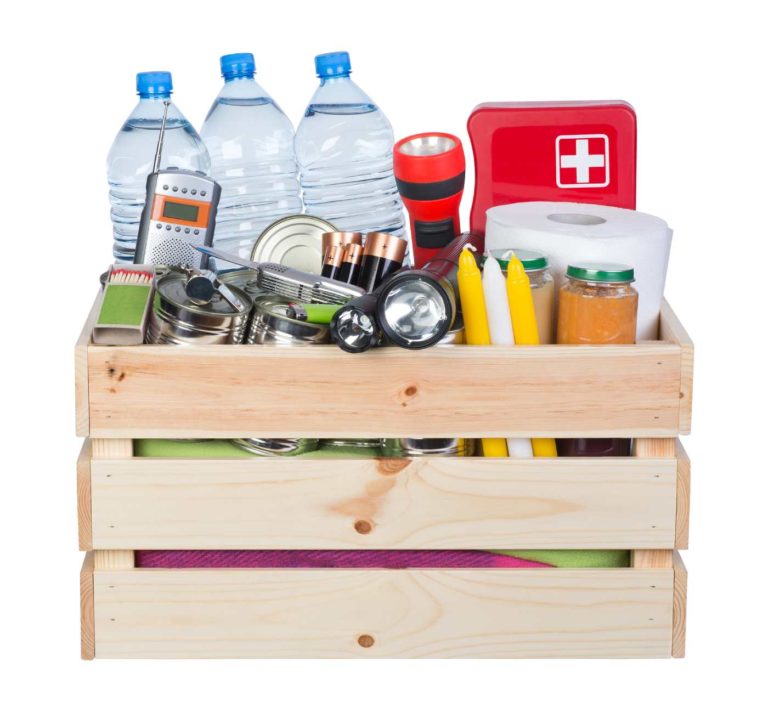It doesn’t take a lot of imagination these days to think of a time when you might need an emergency supply kit. Floods, hurricanes, and wildfires have dominated the headlines for weeks.
In fact, the United States government has a public service campaign—called Ready—to educate citizens about the many natural and man-made disasters we should be prepared for. The list includes more than two dozen threats, including pandemics, bioterrorism, extreme heat, and power outages.
The Basics for a Survival Kit
The purpose of an emergency survival kit is to have the food, water, and supplies you need to live for at least three days on your own. The Federal Emergency Management Agency (FEMA) advises having the following supplies:
- Water. One gallon per person per day, to be used for drinking and sanitation (plan on a minimum of three gallons per person)
- Food. At least a three-day supply of non-perishable food
- Battery-powered or hand-crank radio and a NOAA Weather Radio with tone alert
- Flashlight
- Extra batteries
- First-aid kit
- A whistle to signal for help
- Dust mask to help filter contaminated air and plastic sheeting and duct tape to shelter-in-place
- Moist towelettes, garbage bags, and plastic ties for personal sanitation
- Wrench or pliers to turn off utilities
- Manual can opener for food
- Local maps
- Cell phone with chargers and a back-up battery Store these items in airtight plastic bags and put the entire kit in one or two easy-to-carry containers such as plastic bins or a duffel bag.
Extras You May Want to Include in Your Emergency Kit
FEMA lists the following items as additional items to consider:
- Prescription medications and glasses
- Infant formula and diapers
- Important family documents such as copies of insurance policies, identification, and bank account records in a waterproof, portable container
- Cash or traveler’s checks and change
- Emergency reference material such as a first aid book or information from www.ready.gov
- Sleeping bag or warm blanket for each person. Consider additional bedding if you live in a cold-weather climate.
- Complete change of clothing including a long-sleeved shirt, long pants, and sturdy shoes. Consider additional clothing if you live in a cold-weather climate.
- Household chlorine bleach and medicine dropper. When diluted nine parts water to one part bleach, it can be used as a disinfectant. Or in an emergency, you can use it to treat water by using 16 drops of regular household liquid bleach per gallon of water. Do not use scented, color safe, or bleaches with added cleaners.
- Fire extinguisher
- Matches in a waterproof container
- Feminine supplies and personal hygiene items
- Mess kits, including paper cups, plates and plastic utensils, and paper towels
- Paper and pencil
- Books, games, puzzles, or other activities for children
- Pet food
Have a Plan for Emergency Situations
It’s great to have an emergency supply kit, but FEMA advises also having a family emergency communication plan. What if something happens and you’re not with your family? You’ll need a plan for reconnecting. FEMA’s guide walks you through all the steps to make a detailed plan. Each member of the family should keep a copy of the plan in their backpack or wallet.
A Helping Hand
There are times when we all need help from those around us. StorageMart is dedicated to giving back to the many communities we call home. This collection of initiatives is called Store it Forward. Right now, our focus is on victims of hurricanes Harvey and Irma. Our goal is to raise $25,000—which we will match dollar-for-dollar with a total goal of raising $50,000. If you’d like to help, please visit our donation page with the American Red Cross.


